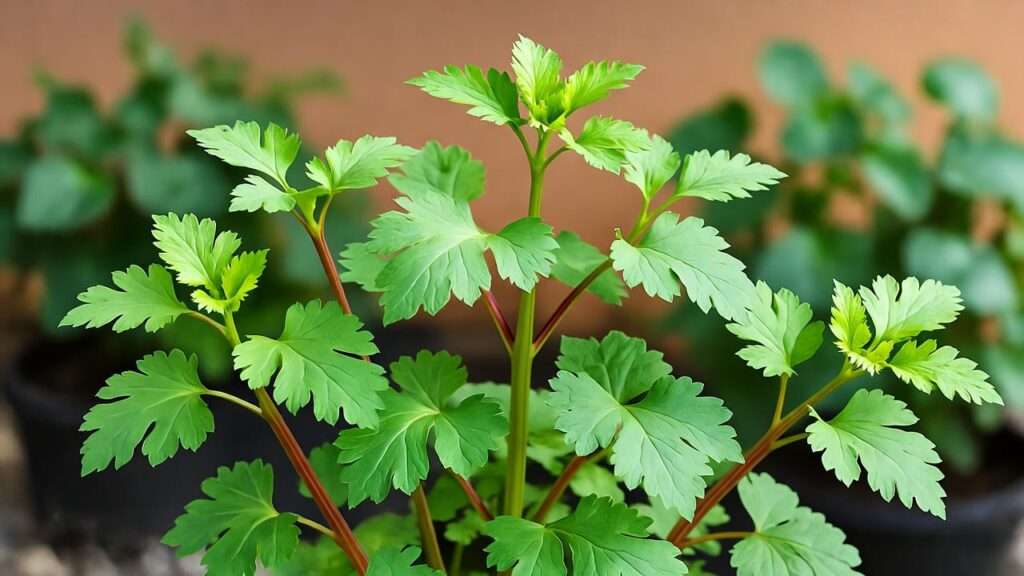Imagine the burst of zesty, citrusy flavor from a Vietnamese cilantro plant, freshly picked from your garden, elevating your homemade phở or spring rolls to restaurant quality! 🍜 Whether you’re a seasoned gardener or a curious beginner, growing a thriving Vietnamese cilantro plant (Persicaria odorata) is easier than you think. This aromatic herb, also known as rau ram or Vietnamese coriander, is a staple in Southeast Asian cuisine, offering a bold, peppery taste that transforms dishes. In this comprehensive guide, backed by horticultural expertise, you’ll discover everything you need to cultivate lush, flavorful Vietnamese cilantro at home. From planting tips to harvesting techniques, we’ll cover it all to ensure your herb thrives and your culinary creations shine! 🌟
1. Understanding the Vietnamese Cilantro Plant 🌞
1.1 What Is Vietnamese Cilantro? 🪴
Vietnamese cilantro, scientifically named Persicaria odorata, is a perennial herb native to Southeast Asia. Unlike true cilantro (Coriandrum sativum), it boasts lance-shaped leaves, reddish stems, and a distinctive peppery-citrus flavor with a hint of spice. Commonly called rau ram, laksa leaf, or Vietnamese coriander, it’s a culinary favorite in dishes like phở, curries, and fresh salads. Unlike true cilantro, which bolts quickly in heat, Vietnamese cilantro thrives in warm, humid climates, making it a low-maintenance choice for tropical or indoor gardens.
1.2 Benefits of Growing Vietnamese Cilantro 🌟
Why grow this herb? Its culinary versatility is unmatched, adding depth to soups, stir-fries, and garnishes. Vietnamese cilantro is also packed with health benefits, including antioxidants, anti-inflammatory properties, and digestive support, according to studies from botanical research. Its vibrant flavor complements fish, chicken, and spicy dishes, making it a must-have for food enthusiasts. Plus, it’s easier to grow than true cilantro, resisting bolting and thriving in containers or garden beds, perfect for urban gardeners or those with limited space.
1.3 Ideal Growing Zones and Conditions 🌍
Vietnamese cilantro flourishes in USDA Hardiness Zones 9–11, where warm, humid conditions mimic its native Southeast Asian habitat. In cooler zones, it can be grown as an annual or brought indoors during winter. It prefers 4–6 hours of indirect sunlight and thrives in temperatures between 65–85°F (18–29°C). Whether you’re growing it in a garden bed, container, or hydroponic system, understanding its climate needs is key to success.
2. Getting Started: Planting Vietnamese Cilantro 🌱
2.1 Choosing the Right Location ☀️
Vietnamese cilantro loves bright, filtered light. Aim for 4–6 hours of indirect sunlight daily to promote lush growth without scorching its delicate leaves. Indoors, place it near a south-facing window or use a grow light for consistent illumination. Outdoors, choose a spot with partial shade, especially in hot climates, to prevent leaf burn. A common mistake is exposing the plant to intense midday sun, which can stress it and reduce flavor intensity.
2.2 Soil and Container Selection 🏺
For optimal growth, use well-draining, loamy soil with a pH of 6.0–7.0. Incorporate organic matter like compost or aged manure to boost nutrients. If growing in containers, select a pot at least 8–12 inches deep with drainage holes to prevent waterlogging. Terracotta or plastic pots work well, but ensure proper drainage to avoid root rot. For small spaces, a 1-gallon container is sufficient for one plant, while larger pots can support multiple stems.
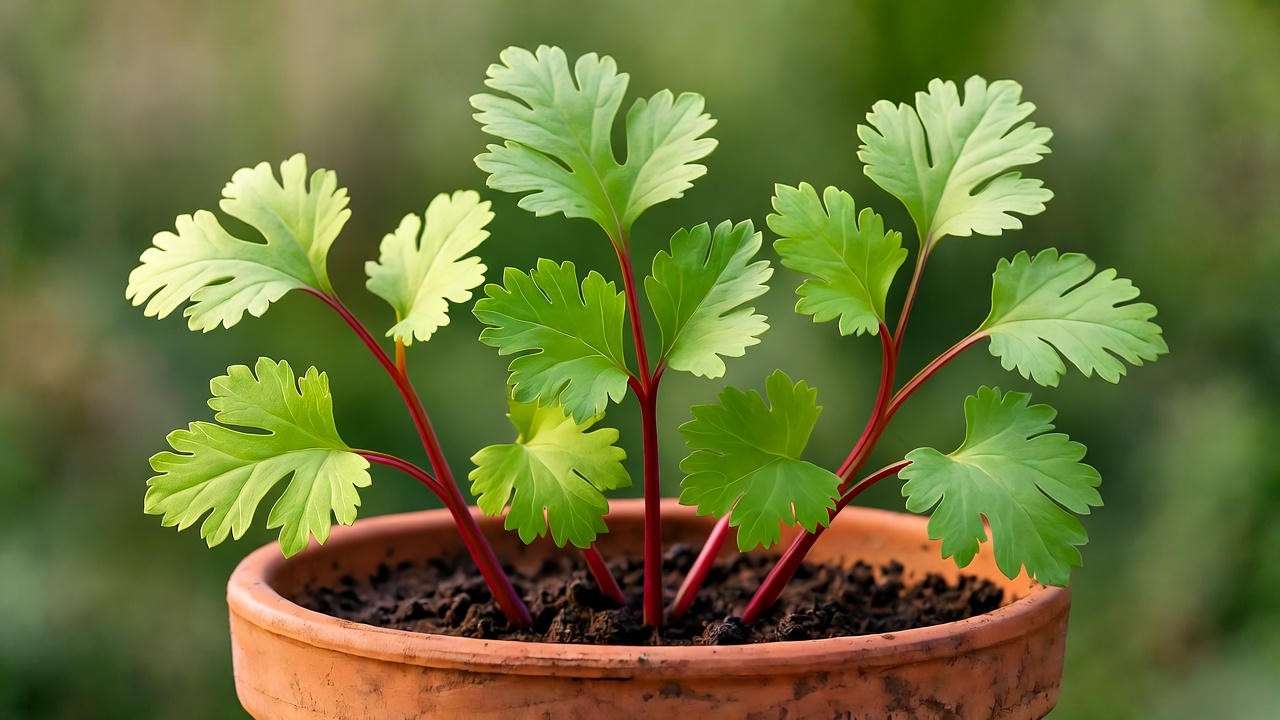
2.3 Propagation Methods 🌿
From Cuttings
Propagating Vietnamese cilantro from stem cuttings is the easiest and most reliable method. Follow these steps:
- Cut a 4–6-inch stem just below a node, removing lower leaves.
- Place the cutting in a glass of water or moist soil, ensuring at least one node is submerged or buried.
- Keep in a warm, bright spot, changing water every 2–3 days if using water.
- Roots should form within 1–2 weeks. Transplant to soil once roots are 1–2 inches long.
From Seeds
Growing from seeds is less common due to low germination rates, but it’s possible. Soak seeds for 24 hours, then sow them in moist, well-draining soil. Keep the soil warm (70–80°F) and expect germination in 2–3 weeks. Thin seedlings to 6 inches apart to avoid overcrowding.
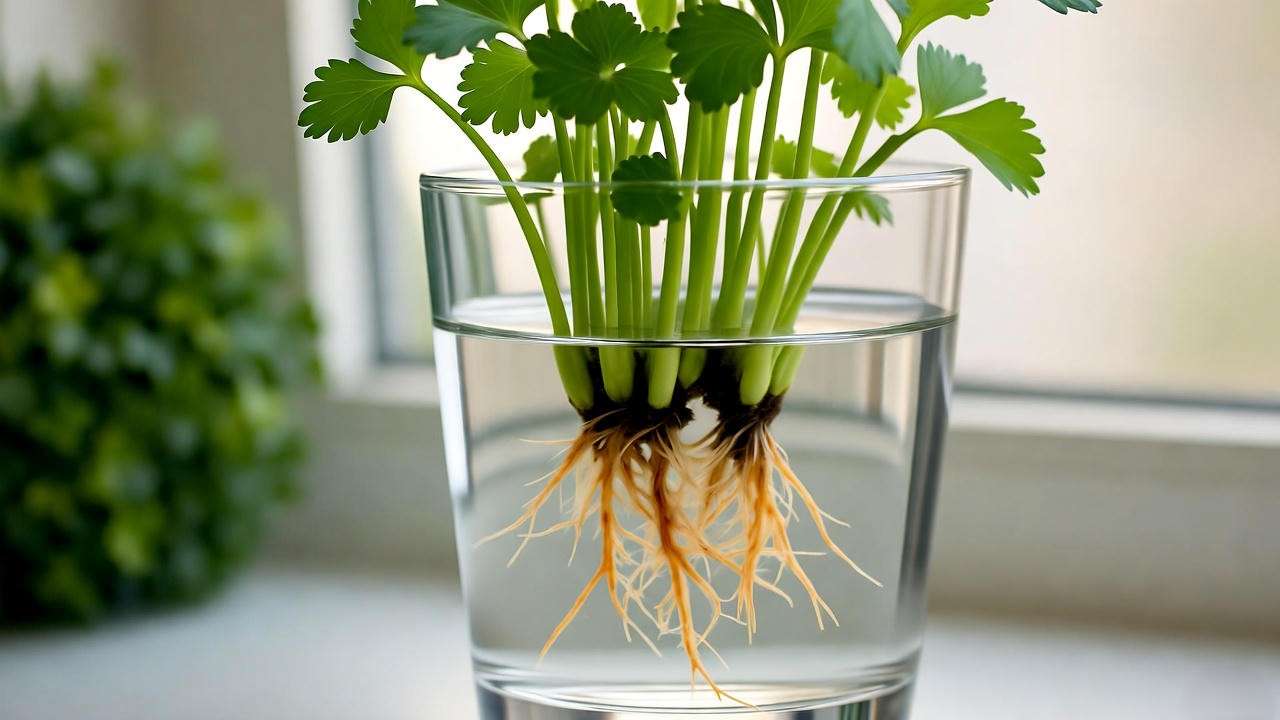
Buying Starter Plants
For instant results, purchase healthy starter plants from reputable nurseries or online retailers. Look for vibrant green leaves and firm stems, avoiding plants with yellowing or wilting foliage. Local Asian markets sometimes carry fresh cuttings you can root at home.
3. Essential Care Tips for a Thriving Plant 🌼
3.1 Watering Needs 💧
Vietnamese cilantro prefers consistently moist soil, but overwatering can lead to root rot. Water when the top inch of soil feels dry, typically every 2–3 days in warm weather. Use a watering can with a fine spout for even distribution, and ensure excess water drains freely. Watch for signs of trouble: yellowing leaves indicate overwatering, while wilting suggests underwatering. In humid climates, reduce watering frequency to prevent fungal issues.
3.2 Fertilizing for Optimal Growth 🌱
Feed your Vietnamese cilantro every 4–6 weeks during the growing season with a balanced liquid fertilizer (10-10-10) or organic options like fish emulsion. Dilute fertilizers to half-strength to avoid burning the plant or altering its flavor. Over-fertilizing can lead to excessive leaf growth with reduced aroma, so moderation is key. For organic gardeners, compost tea is an excellent alternative to provide steady nutrients.
3.3 Pruning and Harvesting ✂️
Regular pruning encourages bushy growth and prevents legginess. Pinch back the tips of stems every 2–3 weeks, focusing on the top growth to stimulate branching. When harvesting, cut leaves from the top third of the plant using clean scissors, ideally in the morning when essential oils are most concentrated. Never remove more than one-third of the plant at once to ensure continued growth. A single plant can yield fresh leaves for months with proper care.
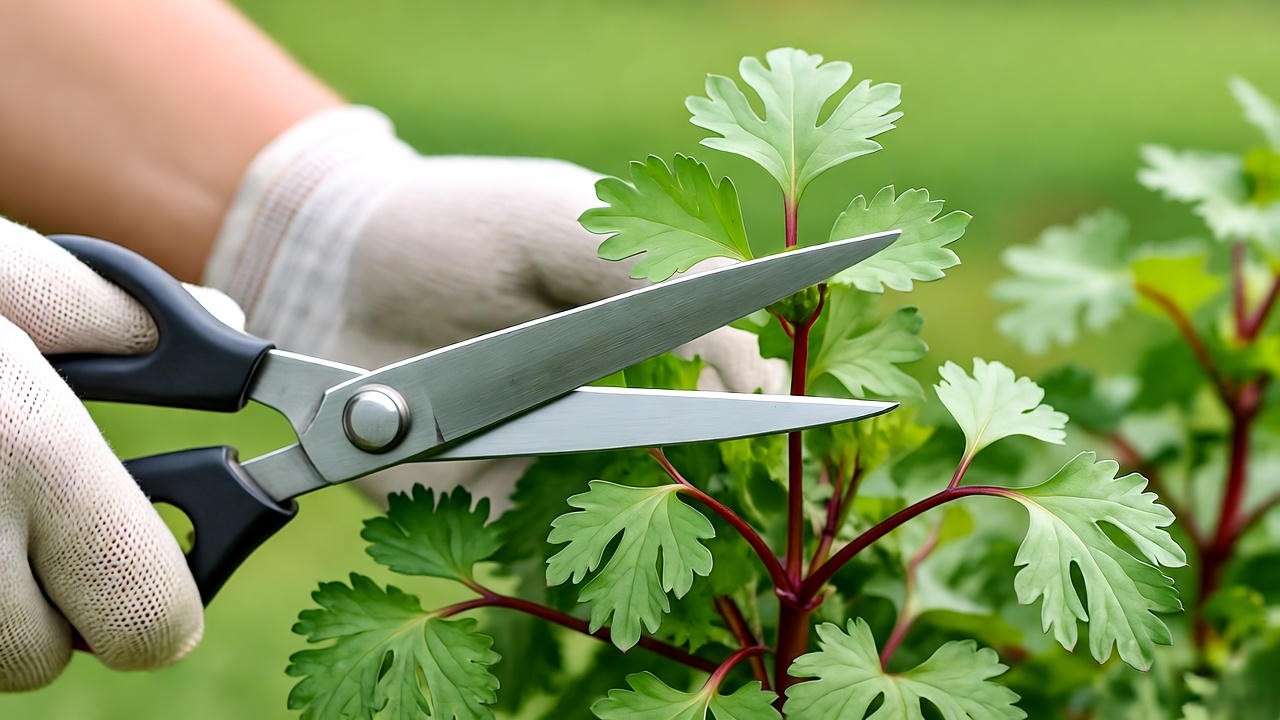
3.4 Temperature and Humidity Control 🌡️
Maintain temperatures between 65–85°F (18–29°C) for optimal growth. In colder climates, bring potted plants indoors during winter or use a greenhouse to extend the growing season. Vietnamese cilantro thrives in 50–70% humidity, so mist leaves regularly in dry environments or place a tray of water near indoor plants. Avoid sudden temperature fluctuations, which can stress the plant and reduce vigor.
4. Common Problems and Solutions 🐞
4.1 Pests and Diseases 🕷️
Vietnamese cilantro is relatively pest-resistant but can attract aphids, spider mites, or whiteflies. Inspect leaves regularly and treat infestations with neem oil or insecticidal soap, applied in the evening to avoid leaf burn. Companion planting with marigolds or basil can deter pests naturally. Fungal diseases like powdery mildew may occur in humid, poorly ventilated conditions. Improve air circulation and avoid overhead watering to prevent issues. If disease appears, remove affected leaves and apply an organic fungicide.
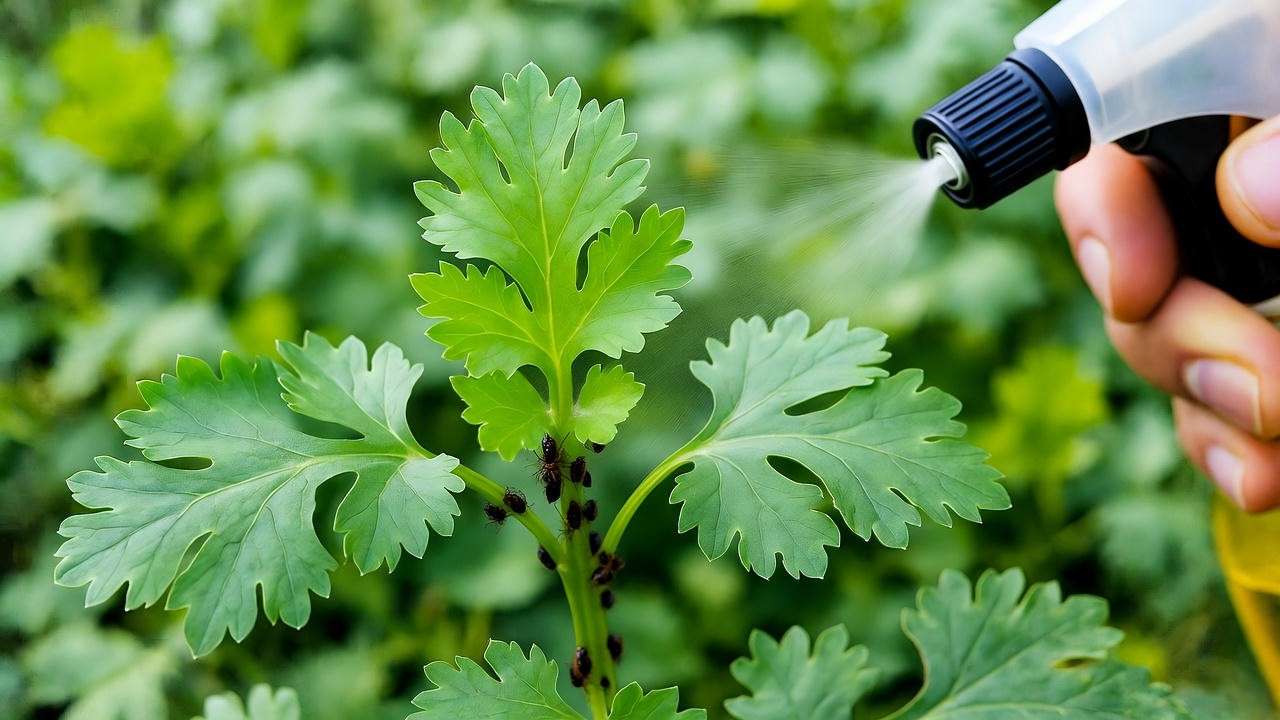
4.2 Troubleshooting Growth Issues 🥀
- Leggy Growth: Caused by insufficient light. Move the plant to a brighter location or supplement with a grow light.
- Yellowing Leaves: Often due to overwatering or nutrient deficiencies. Check soil moisture and apply a balanced fertilizer if needed.
- Wilting: Indicates underwatering or root rot. Adjust watering habits and ensure proper drainage.
Regular monitoring and early intervention are crucial for maintaining a healthy plant. As a horticulturist with over a decade of experience, I recommend weekly inspections to catch issues before they escalate.
5. Using Vietnamese Cilantro in Your Kitchen 🍴
5.1 Culinary Applications 🍜
Vietnamese cilantro’s bold flavor shines in Southeast Asian dishes. Add fresh leaves to phở, bún chả, laksa, or spring rolls for a peppery kick. It pairs beautifully with fish, chicken, and spicy ingredients like chili or lemongrass. Chop leaves finely for salads or use whole leaves as a garnish. Unlike true cilantro, its flavor holds up well in cooked dishes, making it versatile for soups and stir-fries.
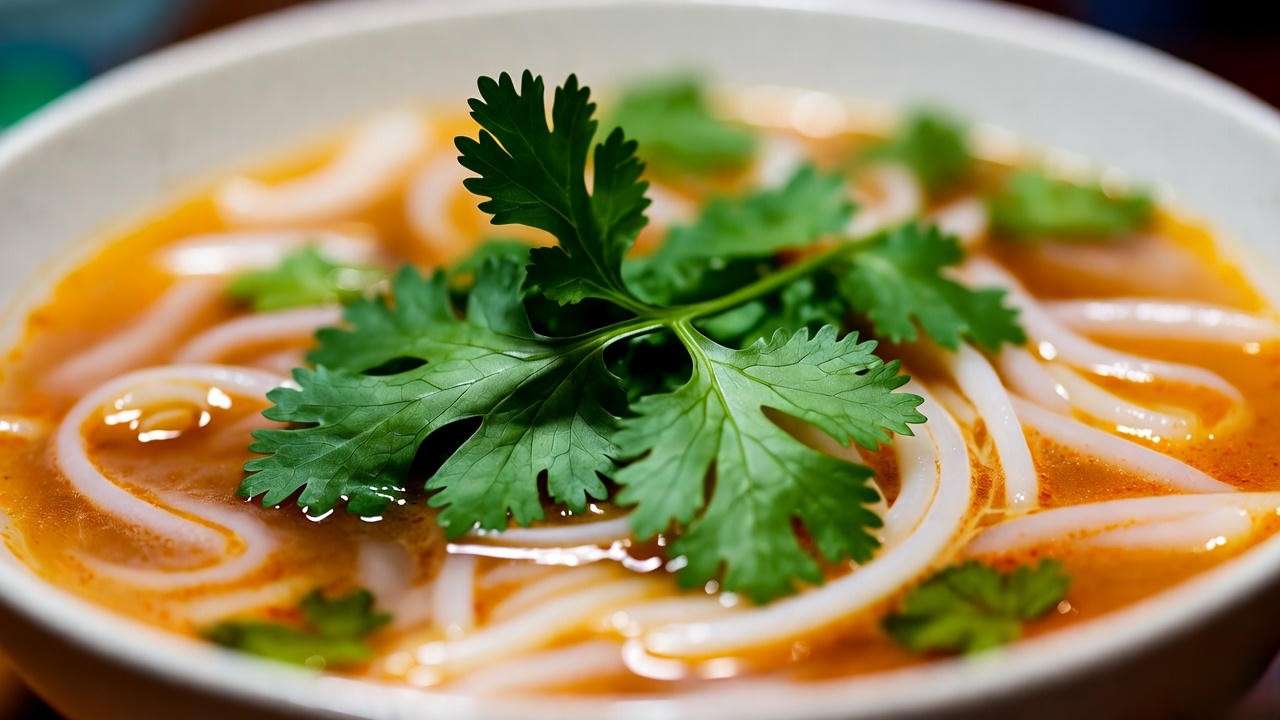
5.2 Preserving Your Harvest ❄️
To extend your harvest, try these methods:
- Freezing: Wash and dry leaves, then freeze in a single layer on a tray before transferring to a freezer bag. Use within 6 months for best flavor.
- Drying: Air-dry stems in a cool, ventilated area or use a dehydrator at low heat. Store dried leaves in an airtight container for up to a year.
- Pesto Recipe: Blend Vietnamese cilantro with garlic, peanuts, lime juice, and olive oil for a zesty pesto perfect for noodles or grilled meats.
6. Expert Tips for Advanced Growers 🌟
For gardeners looking to take their Vietnamese cilantro game to the next level, these advanced techniques will maximize growth and flavor. 🌿
6.1 Companion Planting 🌼
Vietnamese cilantro thrives alongside herbs like basil, mint, or marigolds, which naturally deter pests like aphids and whiteflies. Planting it near garlic or chives can also enhance its vigor while keeping insects at bay. Avoid pairing it with plants that require dry soil, like rosemary, as their watering needs conflict. Companion planting not only boosts plant health but also creates a vibrant, pest-resistant herb garden.
6.2 Hydroponic Setups 💧
For tech-savvy gardeners, growing Vietnamese cilantro hydroponically is a game-changer. Use a nutrient film technique (NFT) or deep water culture system with a pH of 6.0–6.5 and a nutrient solution rich in nitrogen and potassium. Ensure roots stay submerged in water while leaves remain above to prevent rot. Hydroponic systems can yield faster growth and larger leaves, perfect for frequent harvesting. Monitor water quality weekly to maintain optimal conditions.
6.3 Seasonal Care Adjustments 🍂
In tropical climates, Vietnamese cilantro grows year-round with minimal adjustments. In temperate regions, adapt care seasonally:
- Spring/Summer: Increase watering and fertilizing to support rapid growth.
- Fall: Prune lightly to prepare for slower growth and move potted plants indoors if temperatures drop below 50°F (10°C).
- Winter: Reduce watering and place near a sunny window or under grow lights to mimic summer conditions.
As a horticulturist who’s cultivated Vietnamese cilantro across diverse climates, I’ve found that tailoring care to seasonal shifts ensures consistent yields. 🌞
7. FAQs About Vietnamese Cilantro 🌿
To address common reader questions and boost SEO, here are answers to frequently asked questions about growing Vietnamese cilantro, based on real gardener queries.
Why Does My Vietnamese Cilantro Plant Keep Bolting? 🌸
Unlike true cilantro, Vietnamese cilantro rarely bolts, but stress from excessive heat or irregular watering can trigger flowering. To prevent this, maintain consistent moisture and provide partial shade during intense summer heat. If flowers appear, pinch them off to redirect energy to leaf growth.
Can I Grow Vietnamese Cilantro Indoors Year-Round? 🏡
Absolutely! Indoor growing is ideal for year-round harvests. Place the plant near a south-facing window with 4–6 hours of indirect light or use a full-spectrum grow light. Maintain 50–70% humidity with a humidifier or misting, and keep temperatures between 65–85°F (18–29°C). Rotate the pot weekly for even light exposure.
How Is Vietnamese Cilantro Different from Regular Cilantro? 🌱
Vietnamese cilantro (Persicaria odorata) differs from true cilantro (Coriandrum sativum) in flavor, appearance, and care:
- Flavor: Vietnamese cilantro has a peppery, citrusy taste, while true cilantro is milder and soapier to some.
- Appearance: Vietnamese cilantro has lance-shaped leaves and reddish stems; true cilantro has rounded, feathery leaves.
- Care: Vietnamese cilantro is more heat-tolerant and less prone to bolting, making it easier to grow in warm climates.
What Are the Best Companion Plants for Vietnamese Cilantro? 🌼
Marigolds, basil, mint, and chives are excellent companions, repelling pests and enhancing growth. Avoid fennel, which can inhibit herb growth. Companion planting creates a balanced ecosystem, reducing the need for chemical interventions.
How Long Does It Take for Vietnamese Cilantro to Mature? ⏳
From cuttings, Vietnamese cilantro is harvest-ready in 4–6 weeks after rooting. Seed-grown plants take 8–10 weeks to mature. Regular pruning extends the plant’s productive life, often yielding fresh leaves for 1–2 years in ideal conditions.
8. Conclusion: Grow Your Own Vietnamese Cilantro with Confidence! 🎉
Growing a thriving Vietnamese cilantro plant is a rewarding journey that brings vibrant flavor to your kitchen and beauty to your garden. 🌿 By providing 4–6 hours of indirect sunlight, well-draining soil, consistent moisture, and occasional pruning, you’ll enjoy a steady supply of this aromatic herb. Whether you’re garnishing phở, crafting a zesty pesto, or experimenting with hydroponics, the tips in this guide—rooted in horticultural expertise—will set you up for success. Start your Vietnamese cilantro plant today, and share your progress in the comments below! What’s your favorite dish to make with this herb? 🍲

